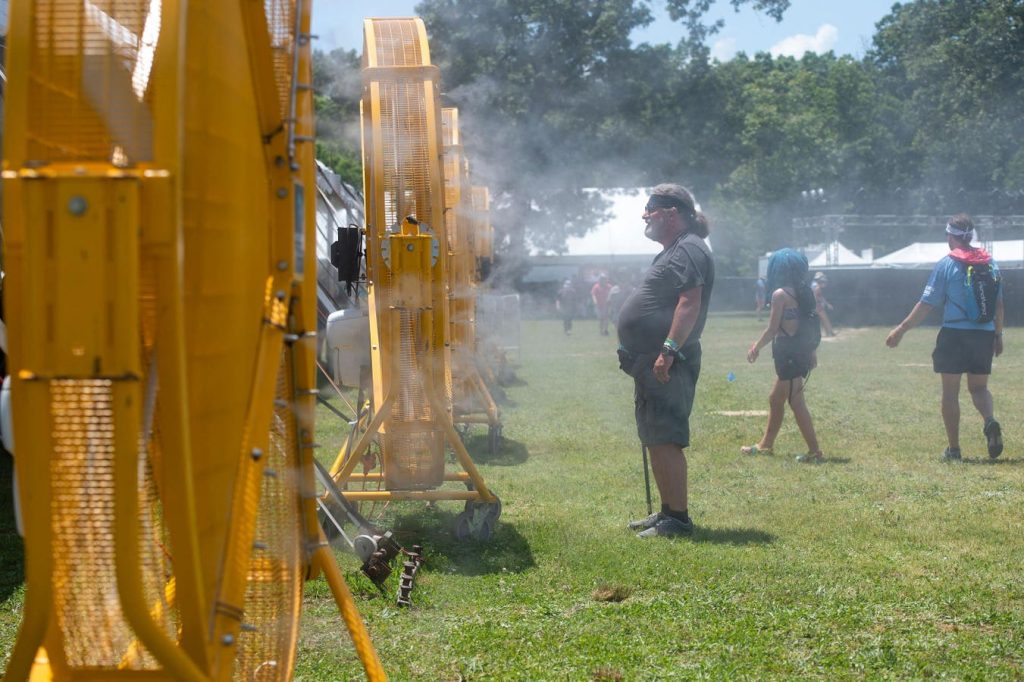With warmer weather upon us, thousands of spring and summer outdoor events are scheduled across the country, from youth sporting events to major music festivals and everything in between. This also brings the potential for crowds to encounter dangerous, severe weather situations. The good news is that event planners have more access to sophisticated resources to address extreme weather risks. The bad news is that many organizers will have to quickly put those resources to the test as this could be one of the hottest summers on record for most of the U.S.
Increasing evidence shows climate change influences the frequency of severe weather events. Not only is this wreaking havoc on human safety and infrastructure, but it also has a significant economic impact, and outdoor events are no exception. According to Climate Central, the frequency of billion-dollar weather disasters is now about one event every 12 days, compared to 18 days between disasters just the year prior. In fact, researchers found that during every single month last year, there were multiple incidents at events where weather created public safety risks.
Here in the U.S., awareness about weather safety for events is a top priority. The Event Safety Alliance (ESA), a nonprofit organization dedicated to promoting “life safety first” throughout all phases of event production and execution, was founded in 2012 in response to a weather-related tragedy at the Indiana State Fair in 2011. Improving risk awareness and planning remains a primary focus of the organization through collaboration with public and private sector partners and the delivery of in-person and online training programs.
Jacob Worek, Director of Operations for ESA, said the organization created an American National Standard on Weather Preparedness in 2021, which notes communication plans are as important as the forecasts to minimize risks. “Weather preparedness plans are only as effective as the organizer’s ability to communicate them,” Worek said. “All stakeholders must understand their role and responsibilities in the event of severe weather, including attendees. In the absence of information, individuals may take actions that undermine your plan, or worse, take no action at all.”
One weather event that is top of mind for event organizers this year is extreme heat. Heat is the deadliest weather event and kills more than twice as many people every year as hurricanes and tornadoes combined. The last ten years have been the warmest years on record, and most forecasters anticipate yet another year of extreme heat ahead. Extreme heat had a major impact on events last year, and both event attendees and performers are at risk of heat-related injury and even death. One high-profile incident last year involved the death of a concertgoer in Rio Di Janeiro, where temperatures soared to 104 degrees Fahrenheit along with high humidity. And, last July, country star Jason Aldean suffered heat exhaustion during a concert in Hartford, Conn., and ended the show early, as tropical humidity and temperatures in the lower 80s had an impact.
Another growing weather concern is storm intensification, often resulting in flash flooding. For example, last year, the Burning Man festival was ravaged by monsoon-like downpours, leaving tens of thousands stranded in a muddy mess in the desert. Attendees were asked to shelter in place, putting a strain on infrastructure, including power, food, and water. Ultimately, the desert dried out enough for attendees to leave days later. Heat and rain are major event disruptors, but other extreme weather can create significant safety risks. For example, at the Red Rocks Amphitheater last summer, a severe thunderstorm warning was issued, and golf-ball-sized hail was seen on the radar. The storm left thousands of concertgoers looking for shelter from storm-related hail at this outdoor concert venue, and more than 100 people were injured during the storm.













